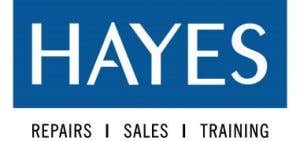Understanding Air Turbine and Power Outputs Dental Handpieces
High speed handpieces or dental drills are versatile and important tools for dentists of all specialties. They vary in their mechanism, but the one thing they have in common is that they require high speeds to be effective.
The high-speed dental air-turbine handpieces are used for cutting and drilling teeth. The rotations of the impeller on these tools make use of compressed air to cut through a tooth’s surface flawlessly.
The air turbine handpiece is a dental abrasive device that rotates at high speed and uses compressed air as the driving force. It’s characterized by its small size, light weight, and painless abrading due to its high-speed rotation but it has low torque and produces loud noise levels.
It’s important to know the difference between cutting speed and rotational speed. The air driven high-speed handpiece can rotate at anywhere from 2 lakh rpms to 8 lakh rpm, but the actual cutting power is typically 30% less than that of its rotating counterpart. This slower rotation we call Free Speed or Active Speed because it applies pressure without actually completing a cut in order for precision work like drilling or filing down edges on glassware with sharp teeth where if you were too aggressive then there would be potential risks such as breaking an edge off prematurely before desired effect has been achieved.
The dental bur stalls if pressure is applied more than what is required for cutting- so watch out! There’s also a basic difference between conventional micro-motor bur rotation and high speed bur rotation. With the high speed handpieces, the burs continue to rotate even after your clinician removes his foot from the pedal controlling air/water spray; this process is called coasting. Most handpieces have two holes that are often referred to as Borden Two Hole Handpieces (named after their inventor).
High-Speed Handpiece Uses
The high-speed handpiece is an excellent tool for various dental procedures. It can be used to remove decay, prepare the crown outline and retention grooves of a new tooth restoration, polish any old or faulty restorations – with one single machine. Other types include ultrasonic devices that emit sound waves at high frequencies in order to break down organic tissue like bone without drilling into it; laser equipment which blasts away plaque from hard-to lighten teeth while creating minimal heat damage because lasers are cooled by special water vapor prior to use; air abrasion machines that might also be known as sandblasters since they blast particles against soft tissues causing them injury.
High-Speed Handpiece Considerations
Key considerations encompass the most important factors for determining which handpiece is right for you
- Handpiece torque power represents how long it takes to remove a set amount of tooth material with this device
- Rotation concentricity ascertains manufacturing precision.
- The noise volume of the handpiece during operation is important for patient comfort, as well as practitioner hearing.
- The turbine repair cost is most often incurred shortly after warranty expiration and every six months thereafter so it shouldn’t be overlooked when making your decision to buy or not.
- Warranty length can be a good indication to manufacturer confidence in their product and should also influence purchase decisions because it shows how confident they are about repairs (whether or not there will need to be any).
- The initial cost of the handpieces represents an investment that your practice makes in each one.
High-speed handpieces come in different manufacturer brands and it is possible that not all your dental staff has the right knowledge of its sterilization and maintenance.
Hayes Handpiece Repair offers an in-office or virtual training on Dental Handpiece Sterilization and Equipment Maintenance.
As a dental practitioner, you also need to ensure that you and your dental staff are also knowledgeable in reducing potential workplace hazards because of the improper use and maintenance of high-speed dental handpieces.
You may also check our training on:
You can also check other compliance and continuing education related dental trainings by visiting the links below:
Hayes specializes in various dental handpiece repair and dental instrument sharpening and retipping. Our experienced technicians have decades of experience working with all major brands of dental handpieces including:
A-dec | Beyes | Bien Air | Denticator | Hall | Henry Schein | Impact Air | Kavo | Lares | Midwest | Morita | Nobel Biocare | Nouvag | NSK | Patterson | Schein Master | Shamrock | Star | Strauman | Stryker | W&H | Young | American Eagle | HU Friedy | Nordent | PDT




